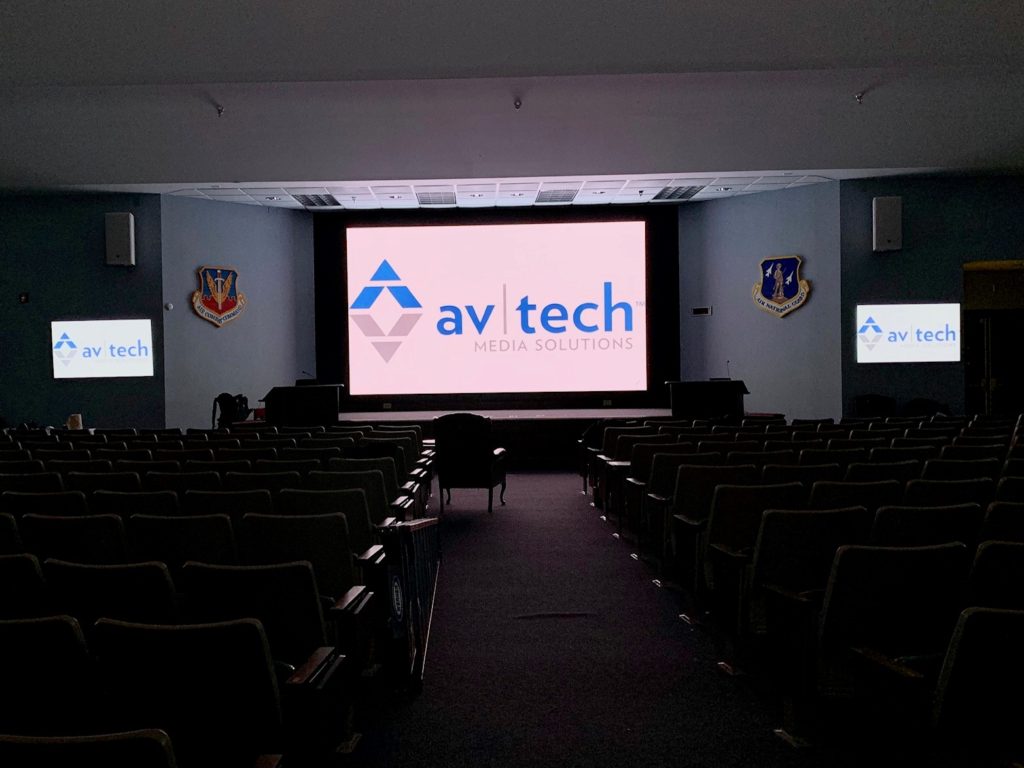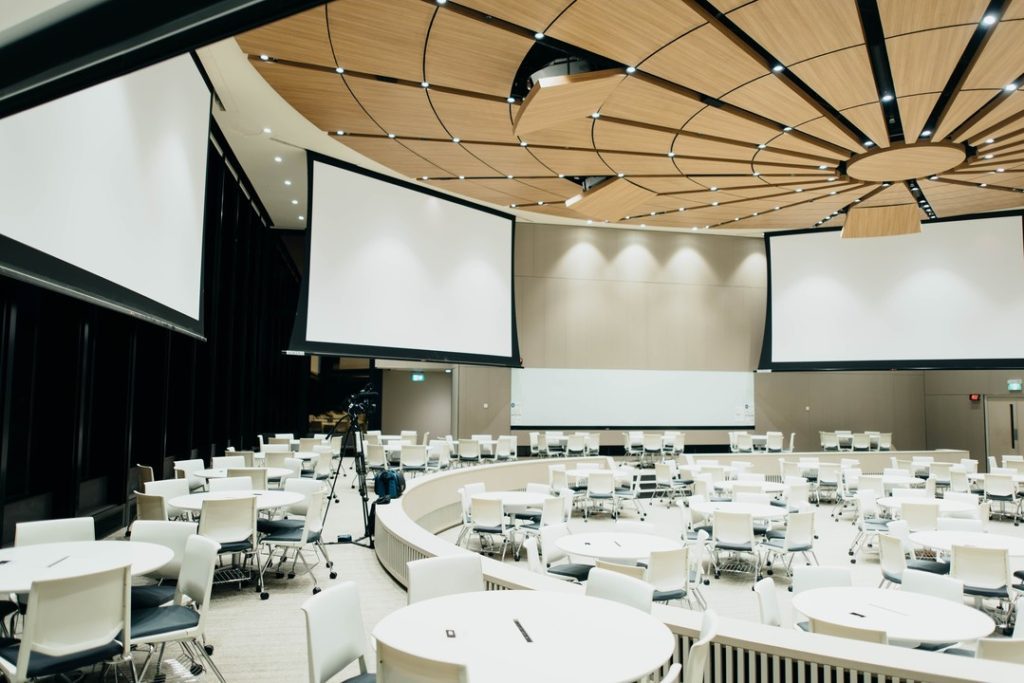While the benefits of a large digital display may seem obvious, there is a lot more involved than meets the eye. Larger displays are becoming commonplace as the consumer market is driving demand for bigger screens. The need to be attention grabbing is becoming more difficult. Displays also must be functional and meet both the needs of the user and the layout of the space. Picking the right type of large display technology means taking all variables into account before making such a grandiose investment.
Where does someone start in the process? What types of considerations need to be made? How big of a TV can I get for my budget? Partnering with a trusted AV provider to ensure the display you choose is not only effective, but also provides you the most bang for your buck.
The Benefits of Bigger Displays
Big displays are eye catching. They pull people in and will be the dramatic focal point of a space. Particularly for events, massive digital displays can create a memorable experience and an emotional connection, becoming a virally sharable, iconic marketing tool. For content, big displays provide a giant canvas of pixel space, creating a freedom for artistic creativity. This means utilizing dynamic types of content, exploring with space, contrast, and format all while keeping everything clear and impactful. Smaller screens can limit the space you have and make sharing complex types of content a difficult mission.
For example, one of our clients with the US Air Force, had an existing auditorium they used for high-level presentations which had two poorly designed projection images on a fixed pre-existing screen. The aspect ratio was wrong, the backend processing was inadequate, and the installation limiting… thus creating an underwhelming image, with challenging issues showcasing information across both screens.
The system needed a full-tilt overhaul. We worked with them to create a new native aspect ratio and direct-light LED presentation experience, that completely changed the value and impact of the space.
The key to this type of success is finding the right fit in size and quality; while maintaining the ability to read content from an extended distance, and providing an adequate brightness level to balance the ambient light.
Types of Displays
After deciding that a new visual experience is needed, you must educate yourself on the different types of display technologies.
Direct view LED is the standard in ultra-large digital displays. This type of technology has been around quite a while and has proven its value and ability to impact a space. You have seen these as your typical stadium jumbotron or digital billboards. Direct view LEDs are designed to be viewed based on minimum distance, by gapping the spaces of pixels. The larger the gap, the further the audience must be to create the appearance of a seamless image. From a distance these look like a unified screen, but the closer you get to the screen the more visible these small gaps appear. As the industry continues to innovate, these gaps are becoming microscopic, and the costs for the smallest of pixel offset is beginning to become a major consideration for all types of spaces.
Another option is LCD Video Walls. These are your typical backlit LCD display, usually with ultra-narrow bezels. They can come in a variety of fixed sizes and can be matrixed together to create a larger and more impressionable video array.
The old and trusted means of creating a large video experience is with projection. This option is often more economical than the LEDs or LCD’s. Projectors can also help keep the technology hidden when not in use. Projector mapping can bend light around complex objects, creating unusually unique video interactions. Projectors are often disregarded when they often might be the best solution available. With the new advancements in Laser and LED projector technology, lamps and painful maintenance are also a thing of the past. The most advantageous consideration of projection is there are no real limits on how big you can go.
Asking the Right Questions Upfront
One of the most important things before deciding on a large-format display solution is doing your research and asking the right questions. At AV-Tech we want to work with you and ask the probing questions to best understand use-case, budget, and expectations.
This inquiring process helps us to understand the needs, desires and options to present. Our ultimate goal is to create the best possible AV experience while keeping your business goals in mind.
Our pinpointed aim is to ensure the total satisfaction over the long haul for all of our clients. Whether it is a lecture hall, event space, high impact piece or enterprise conference room, we want to guide, recommend and provide the best possible display, coupled with hands-on white-glove support.
There are many different options for choosing the right type of “Bigger and Better” display, but with AV-Tech you can rest assured knowing the experts have your back.



